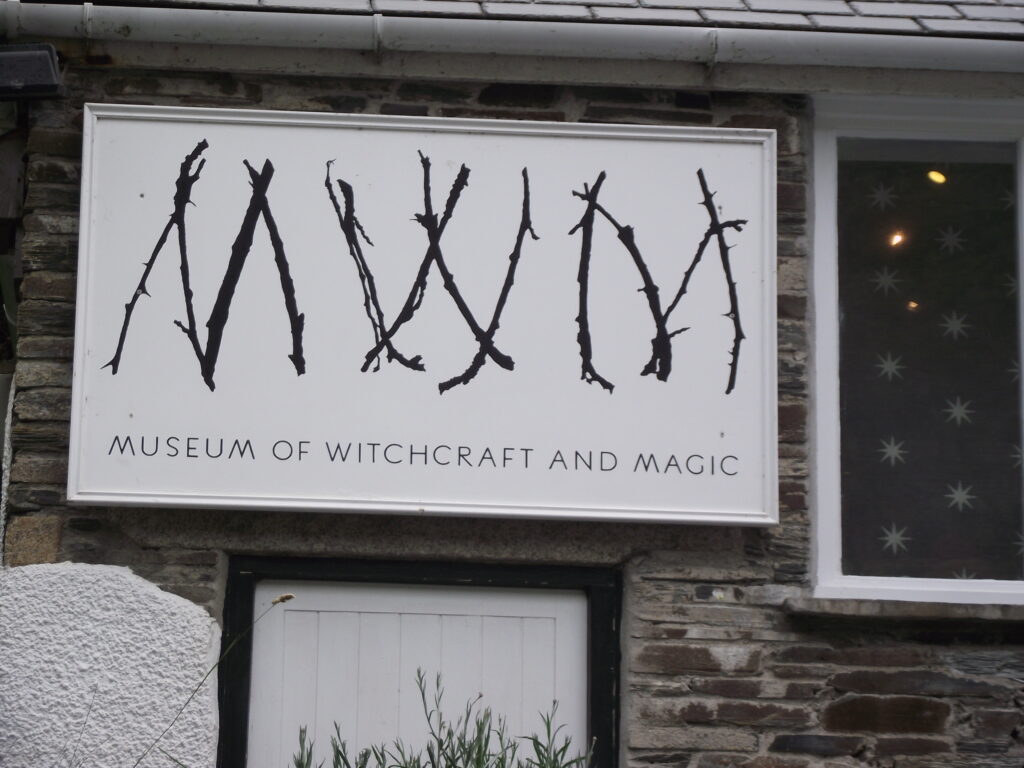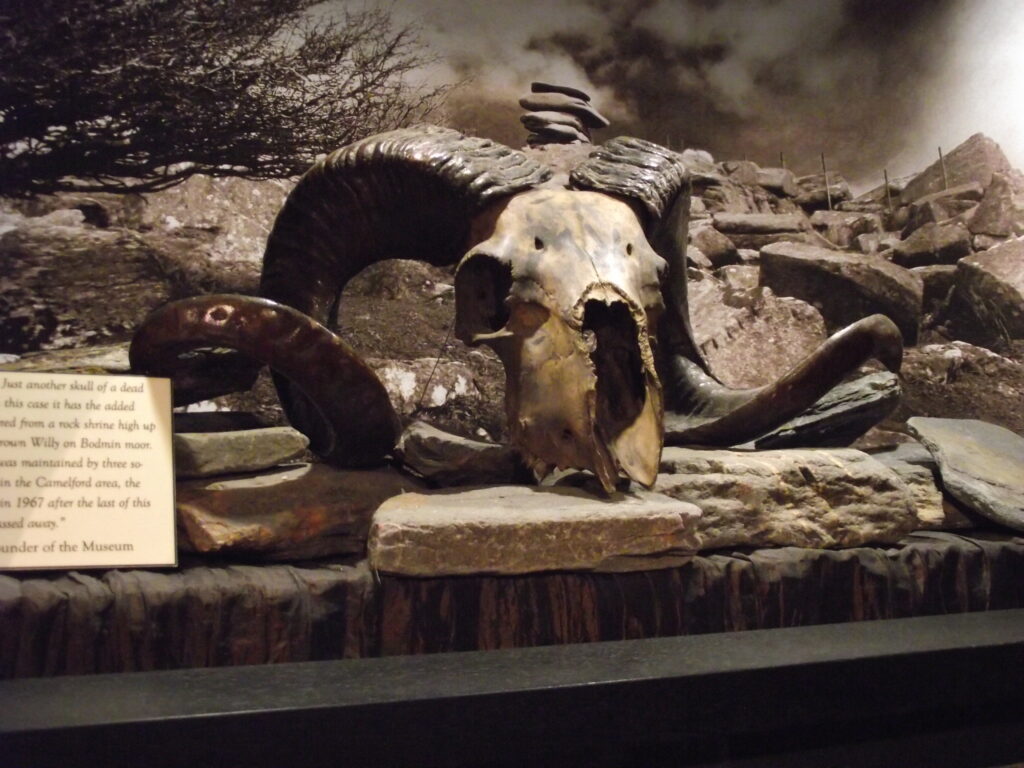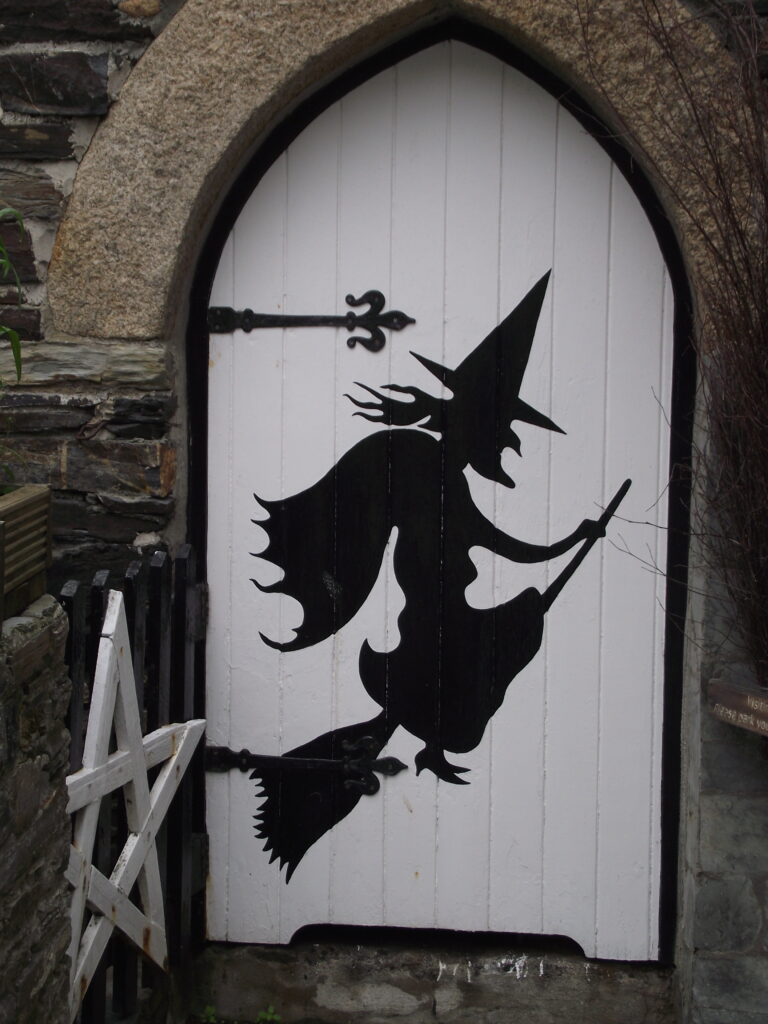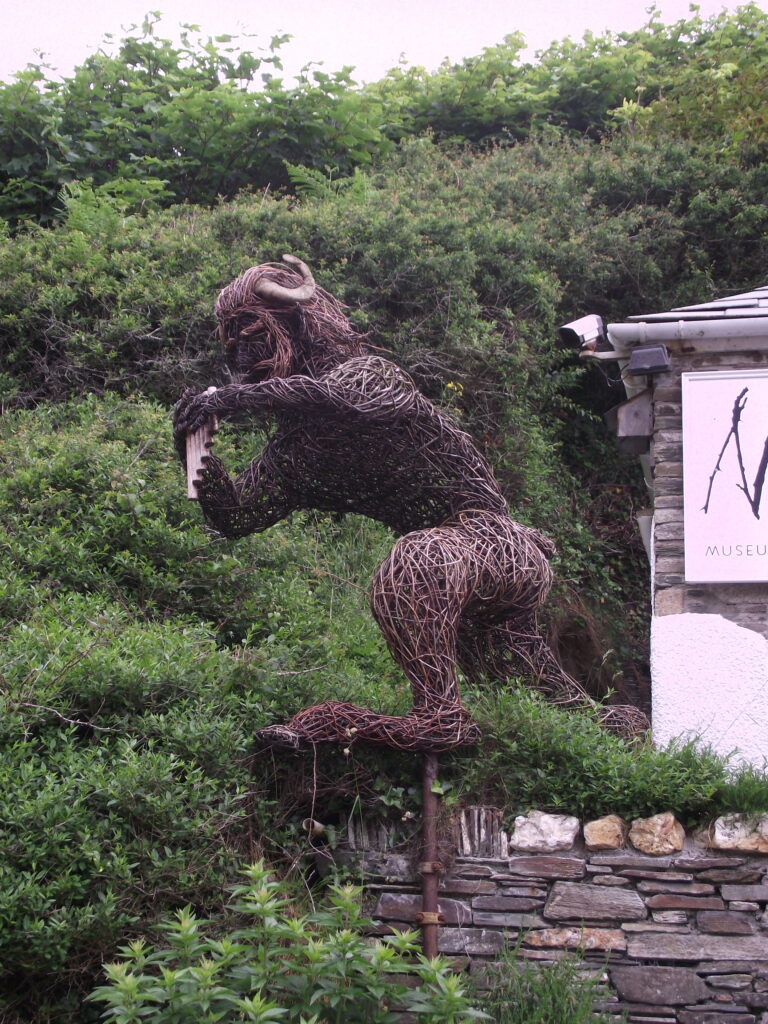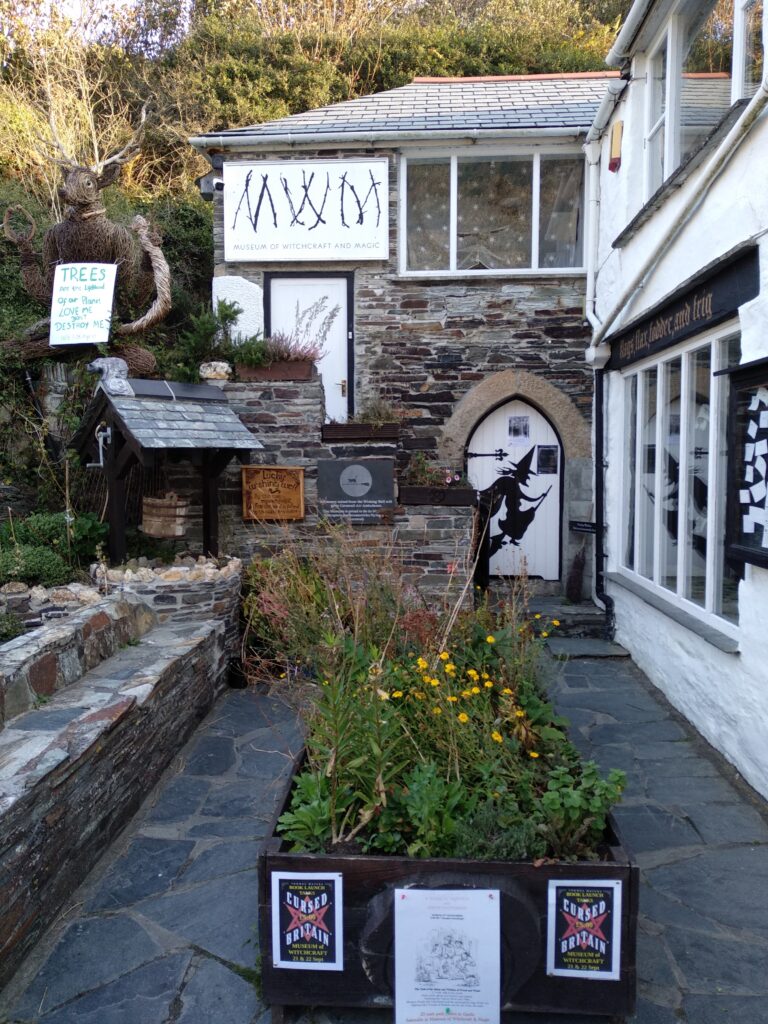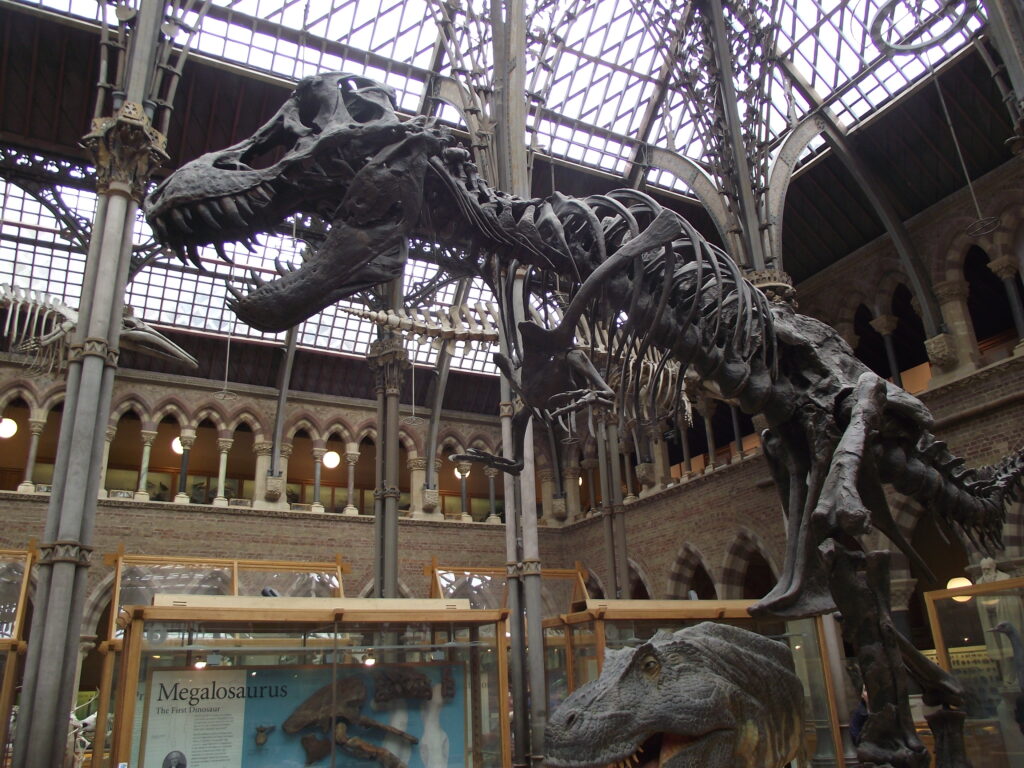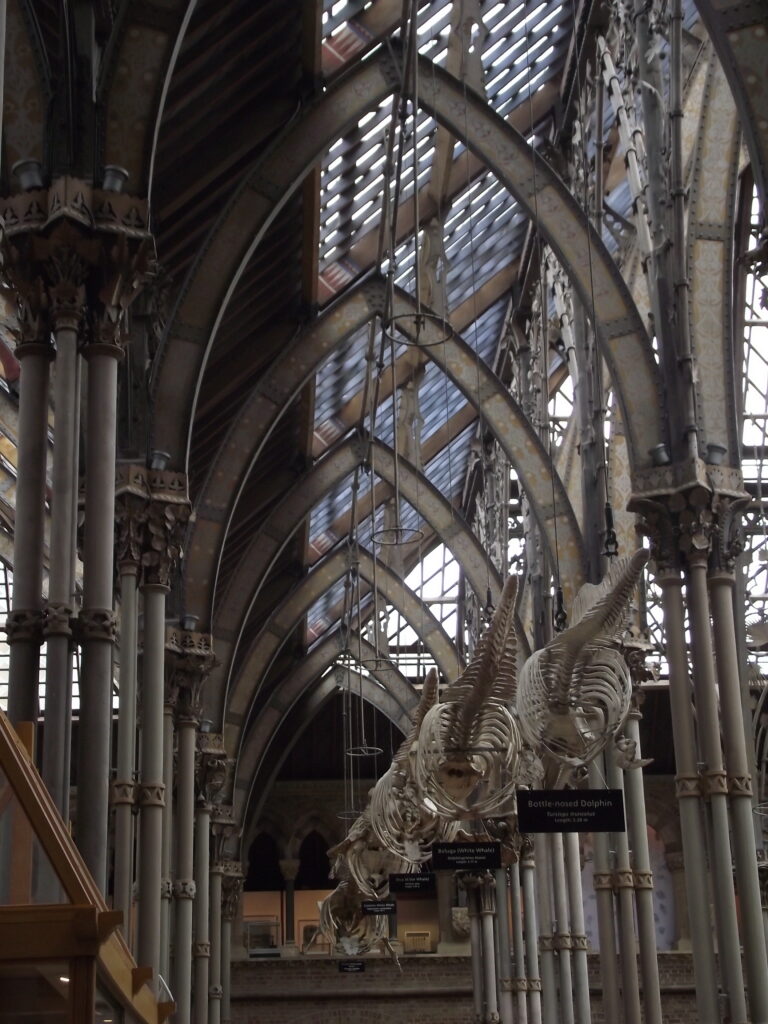In 2019 I researched, wrote and presented a paper at the Museum of Witchcraft & Magic’s Equinox Colloquium, a collection of talks, walks, plays and books- aimed as a celebration of outputs of research inspired by the Museum’s Collections, Library and Archives.
This research was a culmination of my personal research interests, my undergraduate degree in Education and my day job in Children’s social care.
This research considers historic witchcraft cases where children were the accusers. Considering the motivations and causes of the accusations from a psychological perspective and based on the theory that these accusations were a stress response caused by early trauma experienced, both first hand and transgenerationally. Using examples from Early Modern British history including trials in Warboys and Pendle, It considers cases where the children were the initiators of accusations, secondary accusers or in response to being accused themselves.
Children and Witchcraft; Accusations as a response to stress and trauma
Introduction
For many years historians researching witchcraft accusation and persecution have concentrated on adults and the reasons for their involvement. Theories for the causes of accusations have considered a number of different motivations including politics, finances, religion, age, gender or non-conformity, to name but a few. Significant research has been devoted to considering the persecution and trials from feminist perspectives, due in part to the high percentage of women who were involved over the course of history. However there has been considerably less research into children’s involvement, past that of a cursory nod to the information available. Many of the examples of children being actively involved concentrate on how the adults around them exerted their influence directly through coaching or coercion but there is a very limited amount of information available to address the reasons for children’s involvement and less can be found considering their motivations. Whilst the practicalities in dealing with children can be problematic, many of those involved were from small communities where illiteracy was the norm and at a time when children were either considered ‘small adults’ or could be ignored altogether. Much of the information available about these individuals can only be found in court records, sensationalist pamphlets, local legend or hearsay.[1] However it is possible to theorise the reasons for their involvement, particularly when you consider their individual lives and experiences from a psychoanalytical perspective as well as the historic context. Considering the actions of these children and their accusations against others, alongside the more external factors they faced, such as their immediate environments and the different elements of instability within the country as a whole during the early modern period. It is possible to argue that the motivation for accusing others was a stress response, relating to early trauma.
This paper aims to give an overview of what stress is and how it can affect children, causing trauma. It will consider the possible responses children can have to stress and trauma and what their presenting behaviours can look like. It will explain how this information can be used to assess children and witchcraft accusations, using contemporary cases from the early modern period. Finally it aims to address how psychoanalysis can be used to explain the reasons for children’s involvement in witchcraft accusations and what motivated them.
Psychoanalysing the past
When historians have looked at the causes of witchcraft accusations, an emphasis has been placed on the external factors- society, politics, gender etc. Little has been explored as to the individual or internal reasons for people’s actions, past the more obvious reasoning that has been used by those researching the topic. Using psychology and psychoanalysis can help give a greater insight into the minds of the individuals involved in witchcraft accusations, and help to make assessments into their personalities and mental state. From this it is possible to track the causes of their accusations. It must be noted however that using psychology to evaluate people in history can be problematic. Psychology is a modern science and it considers humans and human behaviour in the present. If we consider past communities- times were different, society has advanced but for certain aspects of human development and understanding things will undeniably remain the same. The human brain develops in a set way and has been found to be primal and instinctive in its workings. Modern ideals and learning are ‘higher’ functions and are shaped by external factors for individuals such as their community or wider society. For any human- be it in present day or 400 years ago the primal instincts remain the same, the basic functions are for survival. This can be seen the theories of Abraham Maslow[2], who’s best known work, The Hierarchy of Needs, theorised that humans have a number of physiological and psychological needs that they must satisfy.
Maslow’s Hierarchy of Needs
This theory suggests that humans have five needs, as shown above, progression upwards can only occur when each level has been satisfied. If we consider the needs of individuals, both in Early Modern England and today, these ideas can be applied to both. It doesn’t matter when or where you live, humans’ need each of these aspects to be fulfilled before the brain and body begins to seek out fulfilment of the next level. When aspects of the lower levels are missing or lost, the human brain becomes unbalanced or unfulfilled, which can cause stress. This can have a profound impact as the person’s primal internal system starts to seek to replace what is missing or has been lost. Taking this into consideration, how many cases of witchcraft accusation occurred following the stress of bad harvests, when the physiological need for food was not being fulfilled, or when there was social instability, so people felt a loss of safety and security. Historians such as Jeffery Russell have suggested that Witchcraft accusations can be linked to wider misfortunes within communities, such as famine or war, and that these were the causes for accusations as people sought to find a scapegoat.[4] However for the children in these communities they might not have had enough understanding of the context and as such were reacting to the stress they were feeling, both their own and from those around them.
Stress and Trauma – Lived Experiences and Transgenerational.
The human body is designed to handle stress and will have both physiological and mental reactions to it. The brain triggers the release of hormones to help the body to deal with what it is facing. This is a perfectly normal reaction and the complex and complicated internal systems of the human body regulate and monitor this.[5] However, everybody has their own personal limit, a point where the body can no longer react or regulate itself in order to manage this stress and function properly, this can cause trauma. It has been found that trauma gets ‘stuck’ in the body and can’t release itself, so once traumatised; people can stay affected for years. It has no timeline of when it presents itself.[6] This can be seen when people experience a traumatic event and may not exhibit any symptoms for many years, potentially resulting in behaviours that can be seen to defy explanation.
Trauma itself is recognised as being caused by ‘Toxic stress’ and can impact us at any stage of our lives. Toxic stress is described as being any type of stress that is long in duration or intensity. Psychologists have listed types of stress that can cause trauma as including physical injury, hardship, danger, violence, abuse, rejection, abandonment or neglect. [7] Do any of these sound familiar to what early modern Britain’s would have experienced? Stress related trauma has been found to cause extreme confusion, anxiety and damage to emotional development. It can damage a person’s sense of safety and their trust in relationships, the physical and social environments[8]. It can affect a person’s memory, their ability to learn, cause addictive personality traits or an over-reactivity or hypersensitivity to threats- both real and perceived.[9]
Additionally trauma doesn’t need a mental memory, the human body remembers past trauma, through a complex system of memory networks that involve the senses, so stress can cause trauma in the womb, to babies and infants.[10] The development of a child’s brain happens in the last 3 months of pregnancy and postnatally. Humans are born with immature brains and for any child, their early years’ development will help to shape their future selves, disruptions to this normal progression can have serious consequences and can cause abnormal levels of stress and trauma.[11] These disruptions can take many different forms and how the child deals with them can vary wildly, depending on them individually- the same as for an adult. Theories from Psychoanalytical Psychologists and neuroscientists have considered how the actions, emotions and the environment for the mother can have an effect on the child and how early experiences can have a profound impact on the brain[12].
In relation to children and witchcraft accusations, it is best to consider stress and trauma from two aspects- lived in experiences and transgenerationally. Lived in experiences, as the name suggests, relates to what the child has experienced first-hand and its effect on them. Transgenerational trauma is more complex as it relates to trauma that has been inherited. This can be from the actions, emotions and reactions of parents, this is ‘inherited’ by their children who see and experience their parents trauma without the understanding of what caused it. Alternatively it can be inherited through genetics. When the body experiences stress the physiological reaction can do a number of things including changing the basic structure of the brain and leaving genetic markers on a person’s DNA[13]. Much like a ring on a tree, a human beings’ DNA can be an indication of what they have experienced throughout their lives. A stress marker on a DNA strand means that stress and trauma can be inherited and can make a child more prone to stress or have less resilience to external factors that cause it. If we consider the idea of transgenerational stress alongside the centuries of unrest and turmoil caused by events such as the Wars of the Roses, Wars with Scotland, France and Spain, the Reformation, instability during the Tudor period, The Civil War, famines and the plague etc. it is easy to see how children within the Early Modern Period could become more and more traumatised with each generation as the inherited stresses compacted upon one another.
Visibility and Awareness
The early modern period saw an increase in witchcraft accusations and trials. During this time new legislations were brought in by successive governments[14], which meant that there was a greater awareness about the dangers of witches and as well as more legal recourse against them. Couple this with the invention and wider use of the printing press, the emergence of writings such as ‘Demonology’ by James I[15] and later ‘The Discovery of Witches and Witchcraft’ by Matthew Hopkins and John Stearne[16], and court and trial pamphlets such as Thomas Potts’ “The Wonderfull Discoverie of Witches in the Countie of Lancaster’.[17] All of these would have included or inspired woodcuts depicting ‘witches’ and their familiars. We can understand how people began to not only see threats from malevolent forces within their communities but the writings and pictures gave them an idea of what or who they were looking for.[18] This increased visibility and knowledge meant that communities were more aware, more vigilant and potentially more anxious and stressed about the threat that witchcraft posed. The children within these communities would have had access to the same information as well as having the ideas of god, the devil and everything in between taught to them by their local clergy. Between these dire warnings and the active imaginations that children have, is it any wonder that they began to see threats to their safety and survival all around them. Additionally the descriptions and images being shared would have given them the perfect targets for their fears and stress. However it is important to consider how the children’s own experiences, personalities, circumstances and personal motivations shaped their actions. It important part in finding some reasoning or causality for their having accused another of witchcraft, particularly as many would have known what fate they were sending those individuals to.
Fight or flight
The human body’s primal reaction to stress produces the fight or flight response where the body readies itself to fight against the threat or to escape it. In most circumstances this reaction is appropriate and correct; it is designed for self-preservation and survival[19]. Essentially this process gives the body the strength to fight or the speed to run away. With individuals who have or are suffering from stress and trauma, this process cannot regulate itself properly and the body can produce the responses and associated adrenaline surges when there is no threat or in situations when neither fighting not fleeing is possible[20]. For example children involved in witchcraft trials, both as accuser or as the accused. The fear and stress they would have been feeling would illicit the body’s fight or flight response, however they would not have been able to physically fight back or flee. In these situations the body’s response could be to make an ‘escape’ mentally and the child could suffer from dissociation. Dissociation has been described as allowing children to ‘keep going in the face of overwhelming fear[21]’. One aspect of dissociation can be the separation between thoughts, feelings and behaviours. This separation can explain cases, such as in Pendle in 1612, where children accused family members and friends, knowing what their fate would be[22]. Their emotions, thoughts and feelings towards those they accuse are separate from their conscious mind. By accusing another, their fight or flight response is trying to escape from the stress and trauma they are feeling and alter their situation so that they can physically escape.
Stress & Trauma Presenting Behaviours
Stress and trauma can have a number of different presentations, in adults it is more likely that the emotional dysregulation can be diagnosed and addressed, as the adult brain is better developed in order to understand what is happening and how the individual is feeling. Equally an adult is better equipped to vocalise their thoughts and feelings in a way that allows them to express their stress and address any the underlying issues. For Children this is not as simple. Children, simply because of the age and their continued development, are not always able to communicate how they are feeling, why they are feeling a certain way or express what has caused them to become stressed in the first place. This inability to make themselves known and understood can impact upon the initial stress triggers and compound up what is already causing them trauma as they are forced to ‘bottle it up’.
For children experiencing stress and trauma their behaviours can be a better indication that there is an underlying issue than what they are able to communicate. Stress and trauma related behaviours can include, but are not limited to: separation problems, such as clinging or ‘handing around’, loss of confidence and initiative, emotional changes such as being quiet, withdrawn, noisy, boisterous, irritable, moody, aggressive or too good. There can be repetitive behaviours, in both play and talk. Stress and trauma can cause nightmares, hallucinations, delusions, fearfulness or signs of distress. Children can also have poor physical health as the impact of the hormonal surges take a physical toll on their overexerted nervous and immune systems[23]. Children can also develop attachment difficulties, where they exhibit an insecure level of attachment to the people around them, in particular parents and family members. This can present as either the child ‘clinging’ to others or the child shows a lack of attachment or affection towards others. Insecure attachments could be a cause for children accusing their own family members of witchcraft. For children who have an insecure or disorganised attachment, accusing relatives of witchcraft will not only be more likely due to emotional dysregulation, but the child’s subsequent feelings of guilt will also be numbed or desensitised.
Some of the behaviours recognised as trauma responses could have come straight from a testimony against a supposed witch. Nightmares, hallucinations, delusions, visible signs of fear or distress and repetitive behaviours can all be found in numerous witchcraft accusations as charges levied against the witch. Interestingly if we consider stress and trauma in early childhood development, physical ailments could be considered as either a cause for a person’s trauma or a symptom of it. For example the case of Alice Samuels in Warboys, Huntingdonshire (1589- 1593) and the Throckmorton children, who soon after the family moved into the village began to suffer from unexplained illnesses. Their symptoms started with stomach pains and severe swelling and came to include repetitive sneezing, fainting spells, shaking and narcoleptic fits[24]. In one of her fits Jane, the first afflicted, cried out against an elderly neighbour, Alice Samuel, who had visited to offer her sympathy to the family. As the children’s conditions worsened they began to ‘see and hear’ Alice’s spirits as they were tormented by them. Eventually several maids in the household became similarly afflicted and the community began to cry out against Alice and her family. In this case, as with many similar, Alice was arrested, a confession was gained and she, her husband and daughter were found guilty of witchcraft and hanged. The contemporary sources consider this a straightforward case of a witch attack against innocent children. Modern historians who question this narrative consider the wider causes and implications of the case, such as gender and economic status. Phillip C. Almond questions the guilt of Alice and her family versus the behaviour of the Throckmortons’, based on the fact that the Throckmorton family left Warboys once the children had recovered. Almond supposes that the local community may have begun to doubt the charges against the Samuels Family and the Throckmorton’s were no longer welcome.[25]
We can, however, view this from a completely different point of view. If we consider that the initial illnesses the children experienced, the stomach aches and swelling, were legitimate physical ailments. The physical toll of the illness, based on the contemporary records, was severe enough to cause high levels of toxic stress and associated trauma. Their responses to this trauma was to develop the stress behaviours as mentioned previously, including repetitive behaviours, visible distress, delusions or hallucinations etc. The maids within the household would have been subjected to the children’s pain and distress; this could have caused them considerable stress and in a psychosomatic display they started exhibited the same symptoms in an almost empathetic mimicry of what the children were experiencing.
Conclusion
Numerous theories have been written to explain the witchcraft phenomenon during the early modern period and the motivations of the accusers. Researching the roles of children in witchcraft accusations and considering the facts using psychology, this paper has hypothesised that the physical manifestations and behaviours that the children exhibited are symptomatic of individuals experiencing significant stress, trauma, and attachment difficulties. Without modern understanding of child development or psychology, the children’s behaviours were considered the work of malevolent forces and it often took little for the communities and authorities to agree that a witch was to blame. Coming to a final conclusion for this paper has been incredibly difficult. This research is not all encompassing, it does not seek to give a single cause or motivation to explain why these children acted the way that they did. This research has set out to simply consider what the underlying issues could have been, what caused the children to accuse others and why.
It may never be possible to have a single cause for children’s accusations, simply because every child and every case is individual. This is something that historians need to remember when considering history and particularly witchcraft persecutions. The personal side of each witchcraft accusation makes them all different from one another and they need to be considered on a case by case basis. Similarly, assessing any individuals involved in these cases using psychology and psychoanalysis would need to be person centred. Every person in human history is different and individual; they have been shaped by their environments, families, personalities and experiences, making their individuality, motivations personal to themselves and impossible to summarise in one way.
Bibliography
Books
P. Almond, The Witches of Warboys, (London, 2008) ,p. 199.
M. Gibson, Reading Witchcraft, (London, 1999), pp. 6-10
M. Gibson, Witchcraft; The Basics, (Oxon, 2018), pp. 19-22.
M. Hopkins and J. Stearne, The Discovery of Witches and Witchcraft: The Writings of the Witchfinders (1647) ed. S.F Davis, (Brighton 2007)
King James I of England, Demonology, (Scotland, 1597)
J. Lumby, The Lancashire Witch-Craze; Jennet Preston and the Lancashire Witches, 1612, (Lancaster, 1995), p.89.
Dr S. Mann, Psychology; A Complete Introduction (2006, Hatchet), pp. 148-149, p. 224,
T. Potts, The Wonderfull Discoverie of Witches in the Countie of Lancaster, (1613), ed. James Crossley (Manchester, 1845)
J. B Russell, A History of Witchcraft, (London, 1995), p. 109.
W. Winsham, Accused, British Witches Throughout History, Yorkshire, 2016), pp. xi- xii.
W. Winsham, England’s Witchcraft Trials, (Yorkshire, 2018), pp. 24-49.
Journals
NA Yousseff, L Lockwood, S Su, G Hao & BPF Rutten, ‘The Effects of Trauma, with or without PTSD, on the Transgenerational DNA Methylation Alterations in Human Offsprings’, Brain sciences, 8(5), 83. doi:10.3390/brainsci8050083 (2018).
Websites
Beacon House, Therapeutic Services and Trauma Team, ‘Trauma and Attachment’, at https://beaconhouse.org.uk/trauma-and-attachment/ accessed 03rd September. 2019
Harvard University, ‘Centre on the Developing Child: Toxic Stress’ at https://developingchild.harvard.edu/science/key-concepts/toxic-stress/ accessed 02nd Sept. 2019.
The National Child Traumatic Stress Network, ‘What is Child Traumatic Stress?’, at https://www.nctsn.org/resources/what-child-traumatic-stress accessed 02nd Sept. 2019.
B.D. Perry, ‘Stress, Stauma and Post-Traumatic Stress Disorders in Children’ at www.ChildTrauma.org accessed 02nd Sept. 2019.
Ruth Wraith, ‘Signs of possible trauma in children and adolescents’, at https://tgn.anu.edu.au/wp-content/uploads/2014/10/Signs-of-possible-trauma-in-children-and-adolescents_02.pdf accessed 04th Sept. 2019.
A. Powers Loft, ‘Understanding Traumatic Stress’, at https://www.anxiety.org/experts?institution=emory+university accessed 04th Sept. 2019.
[1] Marion Gibson, Reading Witchcraft, (London, 1999), pp. 6-10.
[2] Dr Sandi Mann, Psychology; A Complete Introduction (2006, Hatchet), pp.148-149.
[3] Ibid.
[4] J. B Russell, A History of Witchcraft, (London, 1995), p. 109.
[5] Dr Sandi Mann, Psychology; A Complete Introduction, (Hatchet, 2006), p.224.
[6] The National Child Traumatic Stress Network, ‘What is Child Traumatic Stress?’, at https://www.nctsn.org/resources/what-child-traumatic-stress accessed 02nd Sept. 2019.
[7] Harvard University, ‘Centre on the Developing Child: Toxic Stress’ at https://developingchild.harvard.edu/science/key-concepts/toxic-stress/ accessed 02nd Sept. 2019.
[8] Ruth Wraith, ‘Signs of possible trauma in children and adolescents’, at https://tgn.anu.edu.au/wp-content/uploads/2014/10/Signs-of-possible-trauma-in-children-and-adolescents_02.pdf accessed 04th Sept. 2019.
[9] Bruce D. Perry, ‘Stress, Stauma and Post-Traumatic Stress Disorders in Children’ at www.ChildTrauma.org accessed 02nd Sept. 2019.
[10] Beacon House, Therapeutic Services and Trauma Team, ‘Sensory Processing, Coordination and Attachment’, at https://beaconhouse.org.uk/useful-resources/ accessed 03rd September. 2019.
[11] Ibid.
[12] Bruce D. Perry, ‘Stress, Stauma and Post-Traumatic Stress Disorders in Children’ at www.ChildTrauma.org accessed 02nd Sept. 2019.
[13] NA Yousseff, L Lockwood, S Su, G Hao & BPF Rutten, ‘The Effects of Trauma, with or without PTSD, on the Transgenerational DNA Methylation Alterations in Human Offsprings’, Brain sciences, 8(5), 83. doi:10.3390/brainsci8050083 (2018).
[14] Marion Gibson, Witchcraft; The Basics, (Oxon, 2018), pp.19-22.
[15] King James I of England, Demonology, (Scotland, 1597)
[16] Matthew Hopkins and John Stearne, The Discovery of Witches and Witchcraft: The Writings of the Witchfinders (1647) ed. S.F Davis, (Brighton 2007)
[17] Thomas Potts, The Wonderfull Discoverie of Witches in the Countie of Lancaster, (1613), ed. James Crossley (Manchester, 1845)
[18] Willow Winsham, Accused, British Witches Throughout History (Yorkshire, 2016), pp. xi- xii.
[19] Dr Sandi Mann, Psychology; A Complete Introduction, (Hatchet, 2006), P.224- 225.
[20] Abigail Powers Loft, ‘Understanding Traumatic Stress’, at https://www.anxiety.org/experts?institution=emory+university accessed 04th Sept. 2019.
[21] Beacon House, Therapeutic Services and Trauma Team, ‘Trauma and Attachment’, at https://beaconhouse.org.uk/useful-resources/ accessed 03rd September. 2019.
[22] Jonathan Lumby, The Lancashire Witch-Craze; Jennet Preston and the Lancashire Witches, 1612, (Lancaster, 1995), P.89
[23] Ruth Wraith, ‘Signs of possible trauma in children and adolescents’, at https://tgn.anu.edu.au/wp-content/uploads/2014/10/Signs-of-possible-trauma-in-children-and-adolescents_02.pdf accessed 04th Sept. 2019.
[24]Willow Winsham, England’s Witchcraft Trials, (Yorkshire, 2018) pp. 24-49.
[25] Phillip Almond, The Witches of Warboys, (London, 2008) p.199.

